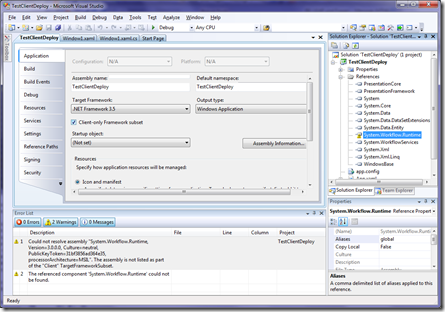The .NET Client Profile is a very interesting extension made available with the release of .NET Framework 3.5. If you’re interested into more details, follow these link to the official documentation!
As a subset of the full .NET Framework package containing client-side functionality, only, it should make the deployment of the .NET Framework for client-only applications in corporate networks easier (30 MB are easier to deploy, maintain and patch than the full Framework with a footprint of more than 100 MB).
So far I was not really challenged with reasons for using the .NET Client Profile from customers – but now it has been the case three different times in series where the deployment of the full framework was a problem for client-only based applications.
Of course one of the first questions customers are asking is: “Which assemblies are included in the client profile and are therefore available for client developers?”
The answer: you can find a list of client-profile assemblies for each version, .NET 2.0, .NET 3.0 and .NET 3.5, in files called “Client.xml” in the following directories on your system:
%windir%\Microsoft.NET\Framework\v2.0.50727\SubsetList\Client.xml
%programfiles%\Reference Assemblies\Microsoft\Framework\v3.0\SubsetList\Client.xml
%programfiles%\Reference Assemblies\Microsoft\Framework\v3.5\SubsetList\Client.xml
Furthermore you can tell Visual Studio 2008 to check your project-references at compile-time by enabling the “Client-only Framework subset” option in the project-properties dialog. In that case Visual Studio comes up with a compiler warning for each assembly you’ve referenced that is not available in the client profile as you can see below:
To get more details on how-to deploy .NET Client Applications using the client-profile just take a closer look at this MSDN-documentation for the .NET Client Profile!
Hope that’s something useful…
